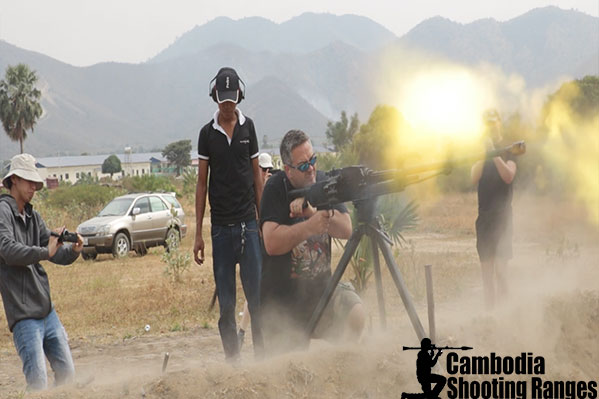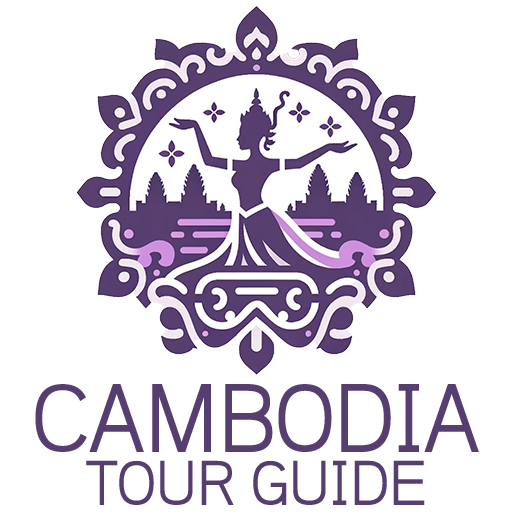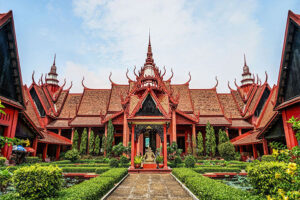Phnom Penh City Detail
Phnom Penh is the capital city of Cambodia.
Phnom Penh is the capital and largest city of Cambodia, situated at the confluence of the Tonlé Sap, Mekong, and Bassac rivers. It serves as the economic, cultural, and political center of the country, offering a mix of colonial architecture, bustling markets, and historical landmarks. Phnom Penh is known for its vibrant street life, ornate Royal Palace, and tragic past symbolized by sites like the Tuol Sleng Genocide Museum and the Killing Fields. The city’s blend of traditional Khmer culture and modern developments makes it a fascinating destination for visitors looking to explore Cambodia’s history and contemporary society.
Phnom Penh History of Cambodia.
Phnom Penh, the capital city of Cambodia, boasts a rich history that encompasses both glory and turmoil. Here is an overview of the history of Phnom Penh city:
Early History:
Phnom Penh was founded in 1372 by an influential woman named Penh, who discovered four Buddha statues floating down the Mekong River. She built a shrine on a hill to house the statues, giving the city its name, which means “Hill of Penh.”
Colonial Period:
In the 19th century, Phnom Penh became the capital of Cambodia under French colonial rule. The French architectural influence is still visible in the city’s buildings and boulevards.
Independence and Turmoil:
Cambodia gained independence from France in 1953, and Phnom Penh continued to grow as the country’s political and economic center. The city, however, faced turbulent times during the Vietnam War and eventually fell under the brutal regime of the Khmer Rouge in the 1970s.
Khmer Rouge Era:
During the Khmer Rouge regime led by Pol Pot, Phnom Penh was evacuated, its residents forced into labor camps in the countryside. The city’s population suffered greatly during this period of mass killings and atrocities.
Post-Khmer Rouge Rebuilding:
After the fall of the Khmer Rouge in 1979, Phnom Penh began the slow process of rebuilding and recovering from the devastation of the previous years. The city saw rapid development in the late 20th and early 21st centuries, with an increasing focus on tourism and economic growth.
Modern Phnom Penh:
Today, Phnom Penh is a bustling city that blends its historical legacy with modernity. Visitors can explore ancient temples, royal palaces, and museums that tell the story of Cambodia’s past, while also enjoying the vibrant markets, riverside promenades, and booming culinary scene that characterize the city’s present-day charm. Phnom Penh continues to evolve, honoring its past while looking towards a brighter future.
Geography of Phnom Penh
Phnom Penh, the capital city of Cambodia, is situated in the southern part of the country at the confluence of the Tonlé Sap, Mekong, and Bassac rivers. Here is an overview of the geography of Phnom Penh
– Location: Phnom Penh is located in the south-central region of Cambodia.
– Rivers: The city is situated at the meeting point of the Tonlé Sap, Mekong, and Bassac rivers, which play a crucial role in the city’s geography and culture.
– Topography: The terrain of Phnom Penh is relatively flat, with some areas experiencing seasonal flooding due to the close proximity to the rivers.
– Climate: Phnom Penh has a tropical wet and dry climate with hot and humid conditions throughout the year.
– Vegetation: The city features lush greenery, including parks and gardens, providing a contrast to the urban landscape.
– Urban Development: Phnom Penh has seen rapid urbanization and development in recent years, resulting in a mix of traditional Khmer architecture and modern structures.
This overview offers a glimpse into the geographical features that shape Phnom Penh, highlighting its strategic location and natural surroundings.
Getting Around Phnom Penh
Getting around Phnom Penh, the capital city of Cambodia, can be an exciting experience with various transportation options available. Here are some common ways to navigate Phnom Penh:
1. Tuk-Tuks: Tuk-tuks are a popular and convenient mode of transportation in Phnom Penh. These motorized rickshaws can be found throughout the city and are a great way to explore the streets while enjoying the open-air ride.
2. Motorbike Taxis (Motodops): Motorbike taxis, known as motodops, are a quick and affordable way to get around Phnom Penh, especially in heavy traffic areas. Make sure to negotiate the fare before hopping on.
3. Remorks (Cambodian Tuk-Tuks): Remorks are like tuk-tuks but are pulled by a motorbike instead of being motorized. They offer a more traditional Cambodian transportation experience.
4. Getting Private Taxis with Phnom Penh Taxi Tour is a group of local guide who able to bring you to explore everywhere in Phnom Penh city and other territory in Cambodia, within the best deal offered
5. Public Buses: Phnom Penh has a limited public bus system, with routes covering major parts of the city. While not as extensive as in some other cities, buses can be a budget-friendly option for getting around.
6. Walking: Many of Phnom Penh’s attractions, markets, and restaurants are within walking distance in certain areas of the city. Walking can be a great way to soak in the local atmosphere and discover hidden gems.
7. Cycling: Some areas of Phnom Penh are bicycle-friendly, and cycling can be a pleasant way to explore the city at a leisurely pace. Bike rentals are available at various shops in the city.
When moving around Phnom Penh, it’s essential to keep your belongings safe, negotiate fares in advance (especially for tuk-tuks and motodops), and be mindful of traffic conditions. Enjoy your time exploring the vibrant streets of Phnom Penh!

Toul Sleng Genocide Museum Security 21 Prison
Toul Sleng Genocide Museum, located in Phnom Penh, Cambodia, is a harrowing reminder of the atrocities committed during the Khmer Rouge regime. Here is an overview of the Toul Sleng Genocide Museum:
Toul Sleng Genocide Museum:
– History: Toul Sleng was originally a high school but was converted into Security Prison 21 (S-21) by the Khmer Rouge regime.
– Purpose: S-21 was used for interrogation, torture, and execution of perceived enemies of the regime.
– Exhibits: The museum houses chilling exhibits such as prison cells, torture devices, and photographs of victims.
– Memorial: Toul Sleng serves as a memorial to the thousands of Cambodians who suffered and died under the Khmer Rouge.
– Visiting: Visitors can explore the museum to understand the dark chapter of Cambodia’s history and pay tribute to the victims.
Please note that the museum contains graphic and distressing material, so visitors should be prepared for a sobering and emotional experience.
Blog text quoteThe Phnom Penh private tour, personal transportation like Taxi car or Tuk Tuk driver and individual tour guide is an inadvisable, because a private tour it’s go along with individual taxi car and plus an English Well local spoken tour guide.
After you arranged a private tour guide and personal car to go around the city with us, then we are than happy to guide to explore all the things you would love to visit for one at a time.
here are the list of things to do and also things to see;
Rifling machine guns shooting activity
Shooting ranges offering a variety of firearms-related activities, including rifle and machine gun shooting, can be found in and around Phnom Penh, Cambodia. These activities are popular among tourists looking for unique experiences. If you are interested in participating in rifle and machine gun shooting activities in Phnom Penh, your hotel or a local tour operator can provide you with more information on available options, including safety regulations and packages offered.




 #118E0, Street 182 Siem Reap, Cambodia
#118E0, Street 182 Siem Reap, Cambodia


